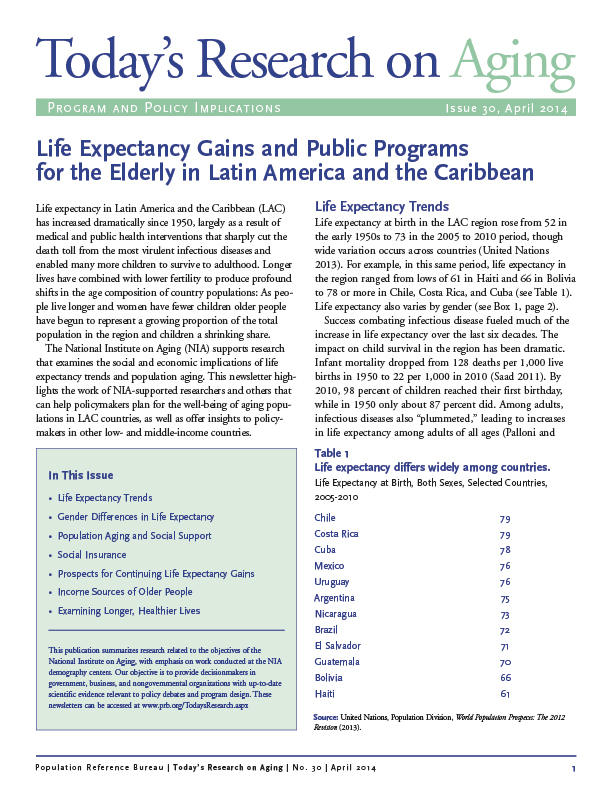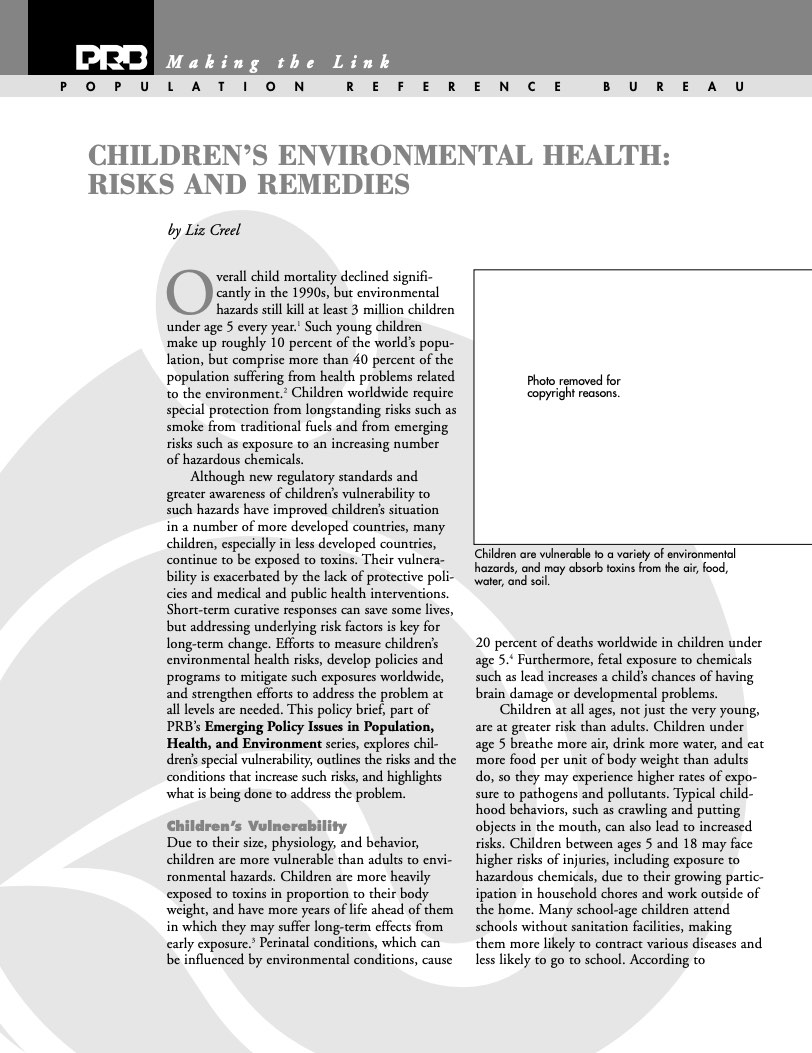16 Search Results Found For : "Uruguay"

Project: Demography and Economics of Aging and Alzheimer’s Disease
Life Expectancy Gains and Public Programs for the Elderly in Latin America and the Caribbean
Life expectancy in Latin America and the Caribbean (LAC) has increased dramatically since 1950, largely as a result of medical and public health interventions that sharply cut the death toll from the most virulent infectious diseases and enabled many more children to survive to adulthood.

Children’s Environmental Health: Risks and Remedies
(2002) Overall child mortality declined significantly in the 1990s, but environmental hazards still kill at least 3 million children under age 5 every year.1 Such young children make up roughly 10 percent of the world's population, but comprise more than 40 percent of the population suffering from health problems related to the environment.2
The Impact of Climate Change on Water, Sanitation, and Diarrheal Diseases in Latin America and the Caribbean
Water and sanitation play a crucial role in the transmission of diarrheal disease. These environmental factors contribute to approximately 94 percent of the 4 billion cases of diarrhea that the World Health Organization (WHO) estimates to occur globally each year.
